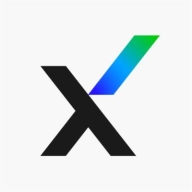

Trellix Network Detection and Response and Microsoft Defender for Identity are two competitive solutions in network detection and identity protection. Microsoft Defender appears to have the upper hand due to its integration and comprehensive features, despite Trellix being favored for its pricing and support.
Features: Trellix offers capabilities such as detecting zero-day threats, detailed malware analysis with its MVX Engine, and in-depth network security insights. It also allows integration with multiple security solutions for enhanced protection. Microsoft Defender for Identity, however, integrates effectively with other Microsoft tools and utilizes advanced AI for threat detection. It offers historical logging and provides visibility into user activities while leveraging extensive cloud integration.
Room for Improvement: Trellix users express the need for better false positive management, enhanced firewall integration, more cloud support, and advanced VM customization. Microsoft Defender for Identity requires refinement in false positive handling, seamless integration between on-premise and Azure, improved alert accuracy, and stronger technical support.
Ease of Deployment and Customer Service: Trellix primarily supports on-premises deployments, with its customer service being highly rated. Microsoft Defender for Identity emphasizes public cloud environments, offering strong integration with Microsoft 365 and commendable technical support, though users find room for improvement in user navigation.
Pricing and ROI: Trellix, while perceived as expensive, is recognized for its effective threat detection, providing considerable ROI by preventing breaches. Microsoft Defender for Identity, as part of the Microsoft 365 suite, offers competitive pricing with flexible feature-based purchases, ensuring a robust security package with notable ROI, especially within the E5 license.
The quality of support is very good, but troubleshooting can take time due to complex setups and the need to provide many logs.
Generally, the support is more effective than other providers like Oracle.
Technical support from Microsoft rates an eight on a scale of 1 to 10 for response time.
Technical support needs improvement as sometimes engineers are not available promptly, especially during high-severity incidents.
In a Microsoft-centric organization, especially with Azure infrastructure and Office 365, Microsoft Defender for Identity is scalable.
Microsoft Defender for Identity is quite robust and built on Azure hyperscale infrastructure, with a 99% availability.
We do not see any issues with the stability of Microsoft Defender for Identity.
Having recently started using it, reliability is affirmed, but manual investigation is often performed to verify if alerts identified by auto-remediation are accurate.
If Microsoft could develop a feature that indicates when impossible travel is caused by VPN connections, it would prevent unnecessary password resets and session disruptions, especially for VIP users in organizations.
One improvement I would recommend is the integration of an admin application within Teams, allowing easy access to attack information on a mobile platform.
Reducing false positives is something we've been working on with Microsoft.
There should be improvements in AI intelligence, faster decision-making, and a more responsive technical support team.
If they can reduce the costs, organizations will be happy, and it will compensate for using the Azure environment, which is more expensive on the infrastructure as a service side.
the Microsoft Defender Suite is quite expensive, especially when integrated into Sentinel.
Ensuring a fair price according to market standards.
We receive an advance report of risky users, allowing us to take preemptive action before an attack causes damage to organization details.
Based on the detection of incidents, we can prevent issues, and if there are any identity-related alerts, they are prevented through a conditional access policy.
The advanced threat protection is one of the strengths of Microsoft Defender for Identity, as it utilizes user and entity analytics and can detect indicative attacks.
Trellix NDR provides an essential defense by automatically responding to network incidents that firewalls may not catch.
| Product | Market Share (%) |
|---|---|
| Microsoft Defender for Identity | 6.4% |
| Trellix Network Detection and Response | 5.2% |
| Other | 88.4% |


| Company Size | Count |
|---|---|
| Small Business | 7 |
| Midsize Enterprise | 3 |
| Large Enterprise | 14 |
| Company Size | Count |
|---|---|
| Small Business | 19 |
| Midsize Enterprise | 8 |
| Large Enterprise | 19 |
Microsoft Defender for Identity integrates with Microsoft tools to monitor user activity, providing advanced threat detection and analysis using AI. It enhances proactive threat response and security visibility, making it essential for securing on-premises and cloud environments like Active Directory.
Microsoft Defender for Identity offers comprehensive monitoring and AI-driven user behavior analysis. It detects threats through real-time alerts and identifies lateral movements and entity tagging, ensuring robust security management. With excellent visibility via its dashboard, it supports customized detection rules and seamlessly integrates with SIEM platforms. While SecureScore and SecureScan provide robust environment security, there is room for improvement in cloud security, on-premises application integration, and remediation capabilities. Azure integration is limited, and the administrative interface could be more user-friendly. Users experience frequent false positives, affecting threat detection efficiency.
What key features stand out in Microsoft Defender for Identity?In specific industries such as education and finance, Microsoft Defender for Identity is crucial for securing on-premises Active Directory and Azure Active Directory environments. It effectively detects suspicious activities and manages conditional access policies, offering user and entity behavior analytics, endpoint detection and response capabilities. This helps prevent unauthorized access and strengthens overall security, making it an invaluable asset for organizations aiming to safeguard their digital infrastructure.
Detect the undetectable and stop evasive attacks. Trellix Network Detection and Response (NDR) helps your team focus on real attacks, contain intrusions with speed and intelligence, and eliminate your cybersecurity weak points.
We monitor all Advanced Threat Protection (ATP) reviews to prevent fraudulent reviews and keep review quality high. We do not post reviews by company employees or direct competitors. We validate each review for authenticity via cross-reference with LinkedIn, and personal follow-up with the reviewer when necessary.